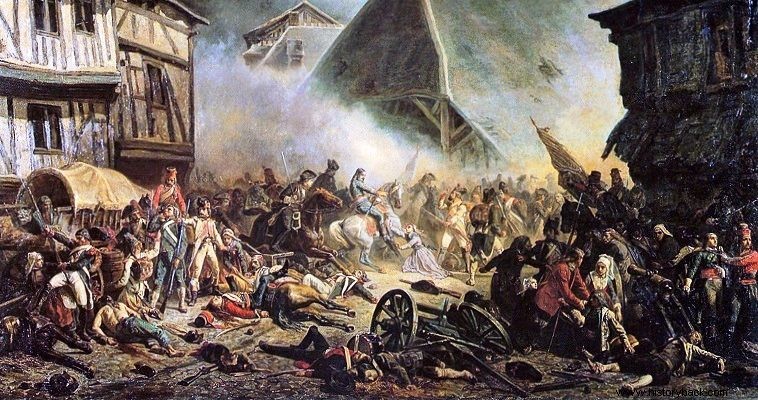
In 1793 royalists in the Vendée region were fiercely fighting loyalist troops at the beginning of the French Revolution. In this civil conflict atrocities against rivals were recorded by both camps. However, what happened during and after the conflict at Le Mans is strongly reminiscent of German extermination camp practices.
In the winter of 1793 the situation for the "Catholic and Royal Army of Vendée" only pink was not imagined. A mere 15,000 men, woefully outfitted, ragged, starving, followed by their equally starving families – about 20,000 souls – were still fighting against the armies of the Republic, dysentery and typhus.
On December 10, 1793 this "army" reached the city of Le Mans and entered it in order to find food. Royalists scattered throughout the city searching without taking security measures . Two days later republican troops – 20,000 men – under Generals Ustermann and Miller moved towards the city.
They were noticed by the royalist general, the brave Henri de Vergier, who left the city with 3,000 men and ambushed the opponents in an adjacent forest. Indeed the unsuspecting republicans fell into the trap and existing casualties panicked and were ready to flee when reinforcements arrived.
Thus, superior and overwhelmingly outnumbered, they overthrew the royalists and pursued them into the city. The royalists within the city were taken completely by surprise. As the sun was setting the democrats entered the city where they met no organized resistance. Thanks to de Vergier's courage some royalists managed to escape from the city.
But most of them were trapped inside it. Those who were trapped, having no hope, decided to sell their lives dearly and managed to resist until the next day. However, every building from which resistance was projected was soon leveled by the cannons of the republicans.
Those who came out of the burning houses, wounded, men, women and children, although they surrendered, were mercilessly slaughtered. It was an incredible carnage. The democrats admitted to the slaughter of 2-5,000 combatants and non-royalists. However, the actual death toll reached 15,000 people, based on the number of those who managed to survive.
The testimonies speak of murders with bayonets of women and children, of brutal executions of rival warriors, of people being thrown into the burning ruins of houses. Revolutions are known to feed on blood, but at Le Mans the democrats outdid themselves in ferocity. It was the largest, in proportion to the time it lasted, massacre during the French Revolution.
